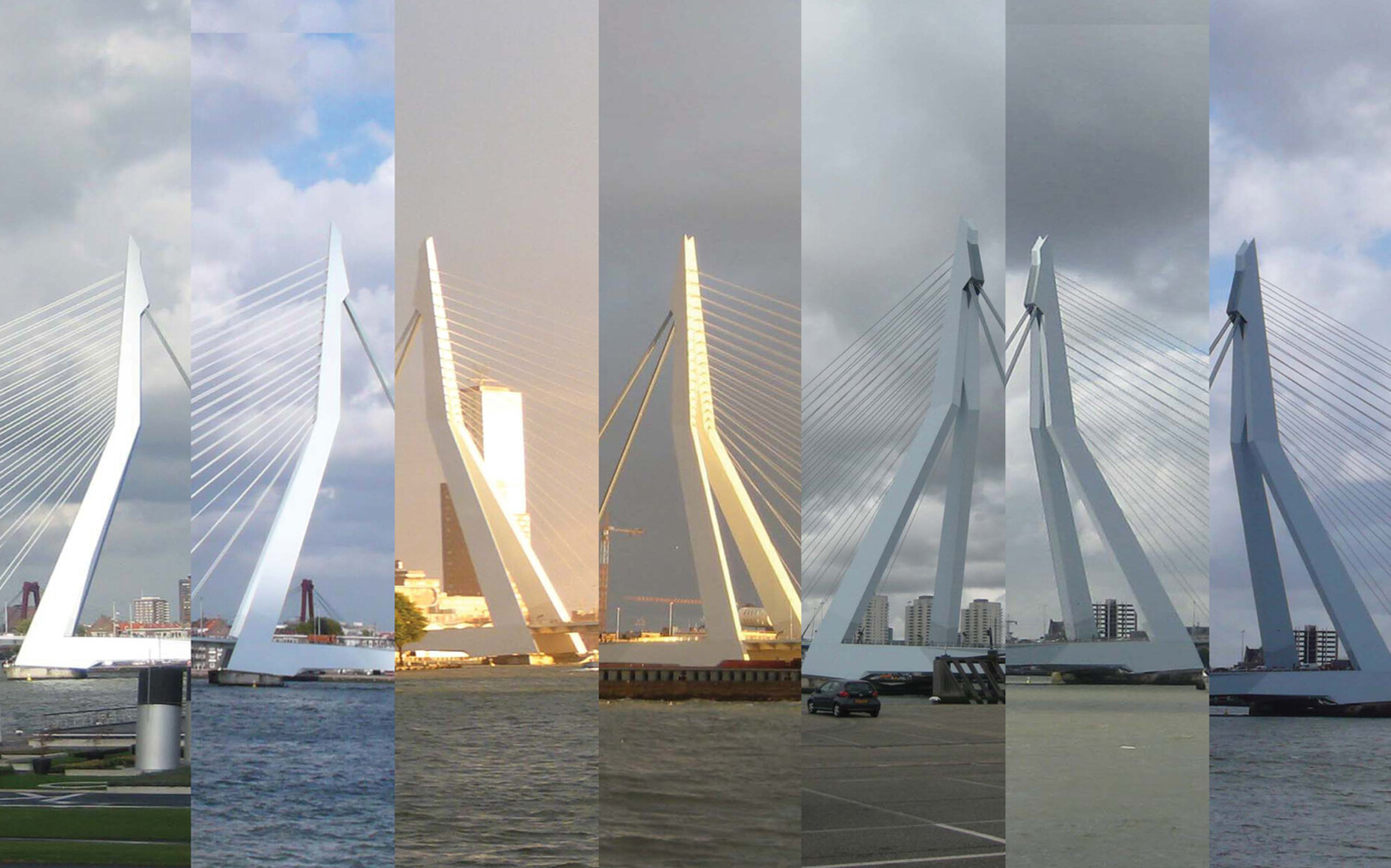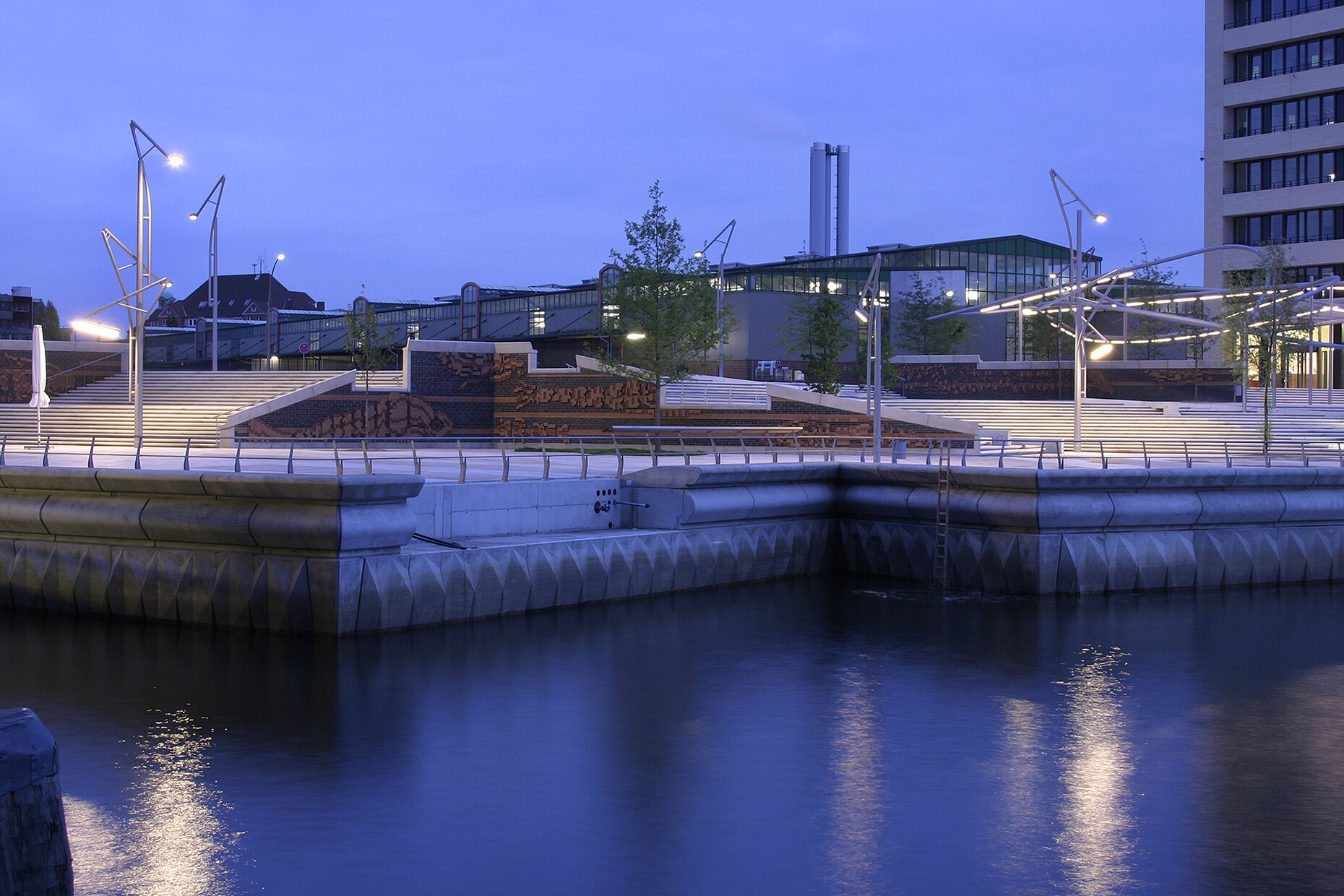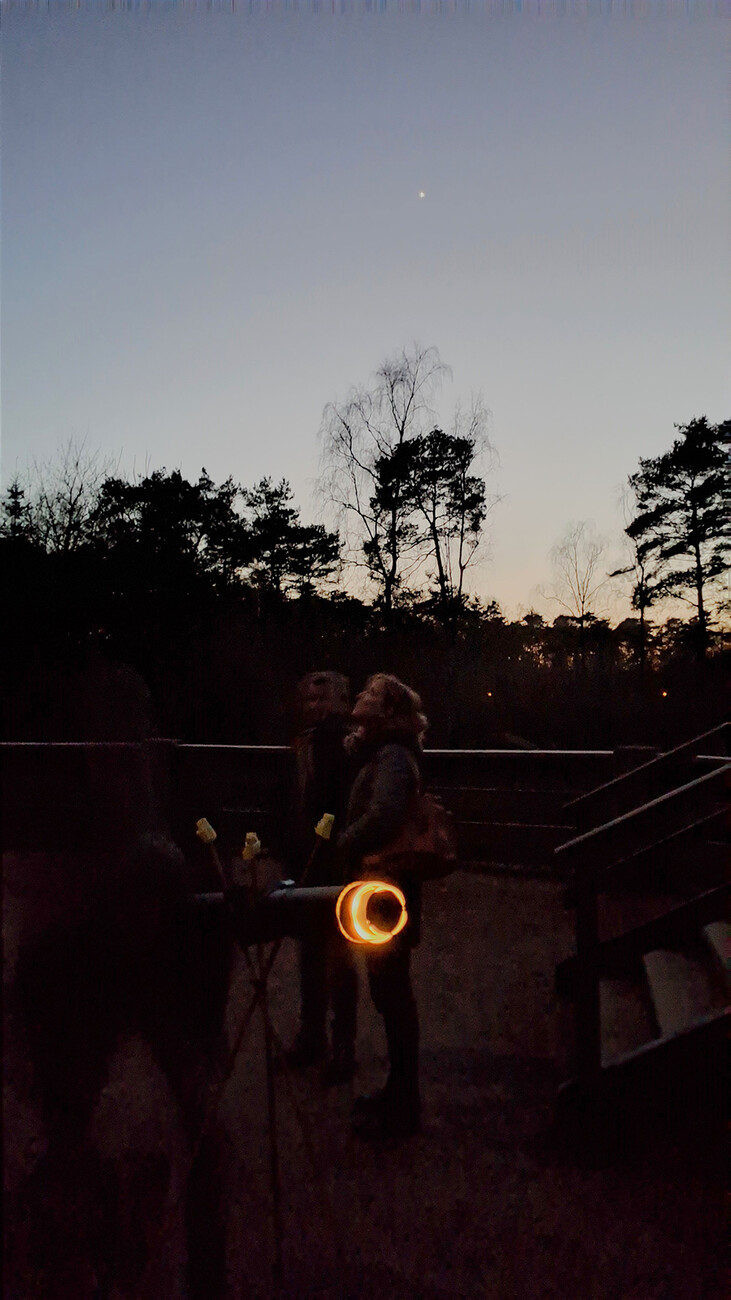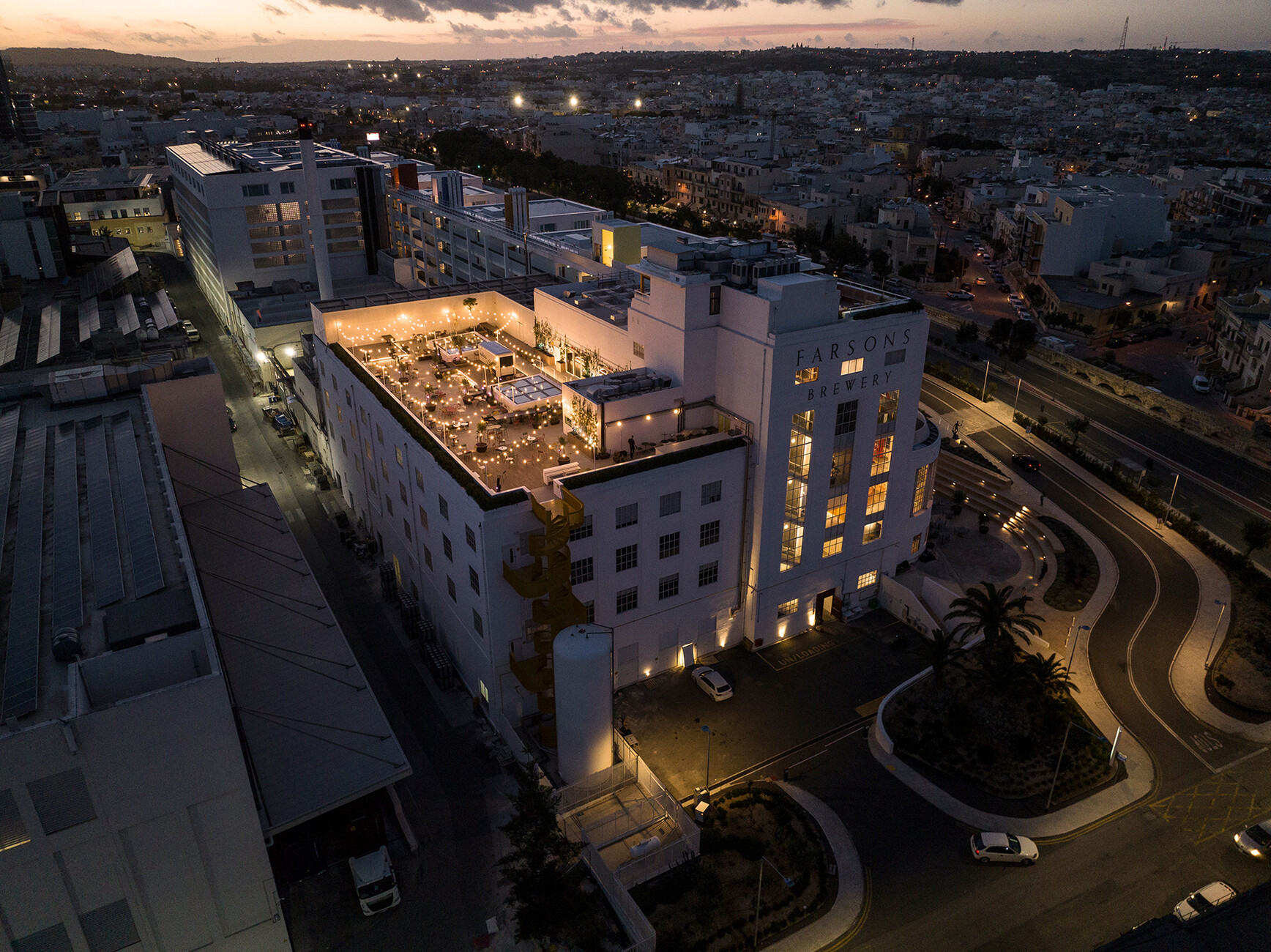Featured
‘Dynamics is light’
Andrea Mende: Ms Brandi, let's get straight to the central question: how can dynamic light be best implemented in urban spaces to incorporate all aspects? There is a lot to consider – energy consumption and sustainability, preserving the night sky, ‘dark sky’, protecting biodiversity, but also safety, orientation and improving the quality of life in urban areas.
Ulrike Brandi: Especially when we talk about dynamic light and, more specifically, light networking, there is this holistic aspect – that daylight is dynamic. As humans, we are evolutionarily attuned to the rhythm of day and night. At the same time, we are influenced by the movement of clouds and the play of light and shadow created by the sun. We have many options for using light dynamically. It is not about planning a rigid artificial lighting situation, but one that is changeable. This has a direct impact on our well-being. We need the variety that we find in nature.
Thomas Römhild: That's a very good introduction. I have studied perception theories extensively, and this question has come up time and again: Why is light perceived differently depending on the culture? Our expectations of light are most strongly influenced by daylight. This also explains why certain types of light, such as certain light colours, are preferred. In Scandinavia, warmer light is preferred, while in southern countries, cooler light is preferred. This certainly has to do with the spectrum of the respective daylight. And the influence we experience through daylight is very strong. Transferring this dynamic to urban spaces is a wonderful challenge. We have worked on another aspect of dynamic lighting specifically in the EU-funded Interreg project ‘Dynamic Light’. This is because the type of lighting is linked to a specific use, which also develops culturally. We are familiar with usage-specific dynamics from interior spaces, where there are scenes that can be selected via a light switch or an app. I believe that there is enormous potential in designing outdoor spaces in such a way that they can support different uses throughout the evening and night.
Mr. Römhild, the EU Interreg project ‘Dynamic Light’ was funded from 2016 to 2019 and involved several countries, with Wismar University of Applied Sciences as a partner. What insights were you able to gain?
Thomas Römhild: Our focus was on planning dynamic lighting in outdoor spaces. We started by simulating how lighting could be linked to usage situations and also researched how this could be implemented technically. We provided planning guidelines on how to record and analyse situations, what lighting is required, and how this can be translated into quality criteria and lighting solutions. It was not possible to cover the entire spectrum in every case, but we have developed a good methodology that we can use to guide students towards designs that include usage-specific solutions for outdoor spaces.
Ms Brandi, you also create master plans for cities such as Rotterdam and HafenCity in Hamburg. Can you give us some examples from your practice?
Ulrike Brandi: Master plans are very extensive and are implemented over a long period of time. In 2014, we finalised the master plan for Rotterdam, but the project is to be implemented by 2030 as part of an ‘urban vision’. In addition to lighting, this also affects tree populations and street furniture. It is therefore not only the lighting that should be dynamic, but also the master plans – and they should be accompanied by professionally diverse committees throughout the entire period. During the process, we are experiencing enormous technical developments in parallel. In the Netherlands, demand-responsive lighting is already widely used, especially on long-distance cycle paths. It is common for people there to commute around 30 kilometres by bike every day. This works because there are very fast cycle routes. There is no need to meet a standard throughout, but instead the situation is adapted to the needs. The lighting is dimmed as a starting point and is switched on like a bow wave in front of cyclists. If there are several people on the route, it stays on for longer. I find solutions like this fascinating. We talked earlier about what people need in terms of lighting dynamics – but we cannot exist without our environment. Dynamics is light. Our well-being, our health and that of the environment depend largely on how sparingly we use light.
Mr. Römhild, what is your opinion on this?
Thomas Römhild: One very important question that always comes up when drawing up master plans is: How can lighting be designed in such a way that the beauty of the night sky is preserved and the day-night rhythm is disturbed as little as possible? At Wismar University, we are working with French lighting designer Roger Narboni, who supplements the lighting master plans with dark master plans. It is interesting to see which areas can, should or must remain dark in order to protect other species or to allow people to experience darkness. It is about defining the boundaries between light and darkness. I believe that dynamic lighting is very helpful in this regard. We have found in our projects that lighting must be provided in order to make public spaces accessible. There is a whole range of interesting research into what this lighting should look like in order to give the impression that you are in a permanently lit, safe situation. So this is not adaptive lighting, but rather proactive lighting. In our EU Interreg project ‘Dynamic Light’, we have tried to highlight that there are these two perspectives. Proactive lighting that is available and allows for certain uses, and adaptive lighting that reacts to certain uses and adapts accordingly.
Ms Brandi, what is your view?
Ulrike Brandi: I work on precisely this issue: on the one hand, we have to avoid light pollution and, on the other, we have to ensure safety. In the eastern part of Hamburg's HafenCity, for example, we have equipped the lights at the sports facilities with buzzers that can be activated. After half an hour, the lighting switches off automatically and can be switched on again by pressing the buzzer.
Would that be proactive in your view, or more needs-based?
Thomas Römhild: In the first instance, it would be demand-driven because it is only a sensor that needs to be activated. But it would have the advantage that you know how to get the light. Then comes the question of how this service is created. That would be proactive. You develop the service and can adapt it accordingly through use. In the ‘Dynamic Light’ project, there were also discussions and tests as to whether the lights on a cycle path should be switched off completely or whether a certain basic level of brightness was needed to signal that the path was lit. Our conclusion was that it is not necessary to be able to see the entire cycle path, but that the area where you are and where you will be in the foreseeable future should be well lit. The light should ‘run ahead’ at a sufficient distance. This has already been tried on motorways in Sweden. As AI develops, we will probably see control systems that can take this proactive character into account more strongly because they will be able to process many more influencing factors. In the Interreg project, we described an idea of combining light with bus timetables or school holiday dates. This and much more could be developed from master plans. However, these things will certainly take some time to reach cities.
Ms Brandi, can you tell us about your EU Interreg project ‘Darker Sky’ in this context?
Ulrike Brandi: In fact, we don't need absolute light values, as these always depend on the ambient light, which is something we lighting designers emphasise time and again. Another exciting topic is participation. When we were planning the project in Rotterdam, this was hardly even a topic of discussion. Today, there are many funded examples that rely on participation, so that users are involved with their knowledge when it comes to neighbourhoods, for example. This also promotes knowledge and understanding of light. In the EU Interreg project ‘Darker Sky’, for example, we invited people to take a night walk in the forest west of Hamburg, where light pollution is lower than in the city centre. Without artificial light, it took a while for our eyes to slowly adjust to the darkness again. I like to mention this to show that we need these moments, which have a positive effect on our psyche, and that it is also about aesthetics and beauty. This can be a dark forest where only tree silhouettes are visible and you can see more stars again. Where you can observe your own shadow cast by the moonlight. This awareness is important, as is the exchange of ideas about it. This applies not only to users, but also to the approving authorities. Everyone involved in the issue should be included. Then installations such as those described by Prof. Römhild would be planned and understood more precisely.
Thomas Römhild: I can only emphasise that. We must learn to trust our own eyes again. It is about creating light that is appropriate to the situation. Both are part of feeling safe – being seen and being able to see. It is not a question of illuminance, but rather of how visual connections are made possible. It is also about how the evening space differs from the daytime.
What is your experience as a lighting designer in this context, Ms Brandi?
Ulrike Brandi: I am often confronted with this in my planning. Standards must be adhered to, but delicate, soft lighting on a façade is often seen as a luxury. Yet the aspect of feeling safe and secure when finding your way around is crucial. Instead of trying to calculate and evaluate everything, we should ask ourselves: How do people feel? When they see a beautiful façade or notice that this is the town hall or the entrance to the church, they become familiar with the city.
Mr. Römhild, can you give us an example?
Thomas Römhild: I was fortunate enough to be able to illuminate a park in the centre of a city. The initial situation was dark, and people found it very unpleasant to walk through. The park was actually lit, but the perception was different. I didn't want to put any more lights in the park, but there were two pavilions on the site that were ideal. I attached decorative lights to them and illuminated them a little from the outside, which was integrated into the street lighting. Otherwise, only lights were installed at the edge of the park. The result is that the park is perceived as illuminated, with a transition from the illuminated streets through the lights at the entrance, which allow the eyes to adapt. The visual targets are the pavilions. Residents now experience them as better lit than before.
Many factors need to be considered when planning lighting in urban areas: financing, the use of any subsidy programmes, etc. In addition to functionality requirements and aesthetic preferences, there are also standards that must be complied with. How did this work with the pavilions in the park?
Thomas Römhild: The park is not one of the areas that must be illuminated, so the standards were relatively open and I did not have to illuminate every path in the park. We then reduced our focus to the main connection and benches in order to guarantee the required lighting. This did not affect the experience of the park.
Ms Brandi, how much do such regulations influence your work?
Ulrike Brandi: There are many such regulations in urban areas, especially when it comes to traffic routes that must be used. We have to achieve certain lighting levels. Unfortunately, there is another problem: LEDs generally provide much stronger light sources, but the old mast spacing is often still maintained. So we are lighting up our cities more and more because it is cheaper to keep the old mast locations and install new light sources there. It would be better to create greater uniformity between these distances and maintain lower illuminance levels directly in the area of the masts – and not go far beyond the standard, as is still the case in some places.
Thomas Römhild: I completely agree with you, Ms Brandi. To reap the benefits of LEDs, different luminaire spacing is required. We basically need a different lighting system and different ideas, including for dynamic lighting. I believe this is also one of the main reasons why these things are being approached very hesitantly.
Ms Brandi, I would like to come back to the light buzzer you used at the sports field in Hamburg. How did you come up with this simple but very effective solution?
Ulrike Brandi: It was developed together with the landscape architects. It is a special feature, a small way of showing that something like this works, saves energy and does not cost much more money.
What measures would be easy for local authorities to implement as a first step towards dynamic lighting?
Ulrike Brandi: We are currently planning a project in Bremen that shows that dynamic lighting can also be used on a smaller scale. Our proposal involves creating a clearing in the middle of a large square. There, the light will sometimes be brighter, sometimes darker, reflecting the natural situation. The aim is to create a cosy place with a social character. At home, we tend to have the most multifunctional rooms, and we can learn a lot from the use of indoor spaces, for example with regard to new technologies and social changes, in order to deal with our living space differently.
Thomas Römhild: That was a nice summary of where lighting design in general, but especially in public spaces, should be heading: that this space should also be understood as a living space. In urban planning, attempts have been made for some time to design urban spaces in such a way that they enable encounters and shared use. This can be significantly improved with good lighting. Just as you described, Ms Brandi, it can improve orientation within a location. We can also create a certain sense of identity and pride in the city – not by bathing it in spotlights, but by using light to guide people through the different areas and the city, thus creating a shared experience and a shared memory. Urban space can strengthen the sense of community in society.











